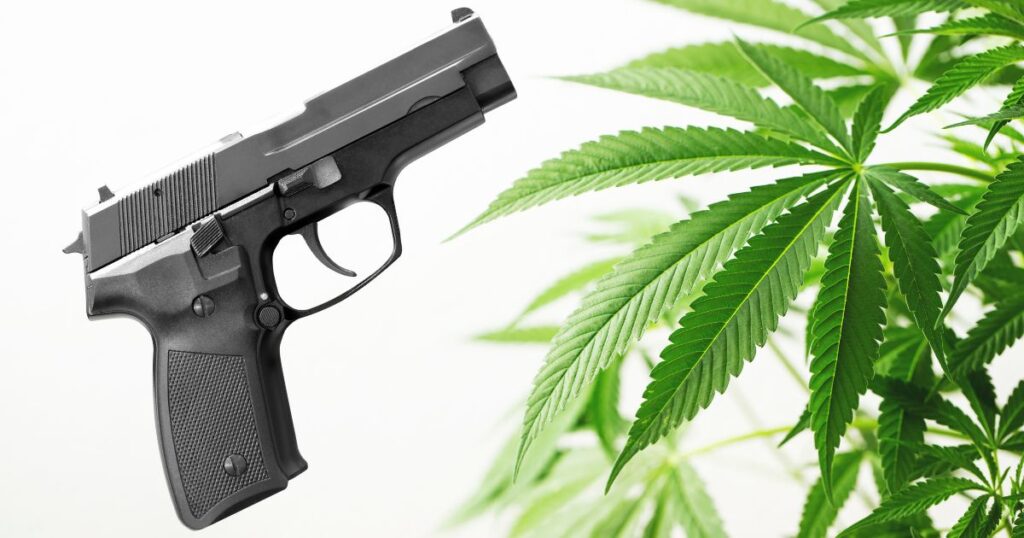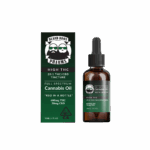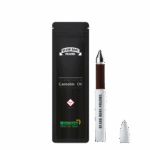As the Supreme Court prepares to hear United States v. Hemani, a critical question is before the Court: can a law-abiding adult who uses cannabis legally under state law be barred from possessing a firearm under federal law? At issue is 18 U.S.C. § 922(g)(3), which prohibits any person “who is an unlawful user of or addicted to any controlled substance” from owning or possessing firearms or ammunition. Because cannabis remains federally illegal, millions of Americans—even those fully compliant with their state’s cannabis laws—fall into a legal gray zone where their Second Amendment rights may be at risk.
The Fifth Circuit recently dismissed a § 922(g)(3) prosecution against Ali Danial Hemani, holding that the government failed to show a historical tradition of disarming individuals solely for drug use. The court emphasized that the statute could not constitutionally bar someone who uses cannabis responsibly and is sober while handling firearms. Similarly, the Eleventh Circuit has found that medical cannabis users who are neither convicted nor demonstrably dangerous cannot be categorically denied firearm rights. These decisions reflect the Supreme Court’s post-Bruen framework, which requires that firearm regulations be consistent with historical traditions of disarming particular classes of individuals.
Ali Danial Hemani was indicted in the Eastern District of Texas for possession of a firearm as an alleged “unlawful user” of a controlled substance. During execution of a warrant, agents found a Glock 9 mm handgun registered to him, approximately 60 grams of marijuana, and about 1–4 grams of cocaine in his residence or vehicle. He admitted to using marijuana every other day, keeping a quarter ounce of marijuana in his car or at home, and purchasing cocaine once or twice per year.
The district court granted his motion to dismiss the indictment, and the Fifth Circuit affirmed dismissal, holding the government’s evidence inadequate under the circuit’s precedent that § 922(g)(3) was unconstitutional as applied where the government failed to show intoxication or contemporaneous impairment at the time of firearm possession. The government then petitioned the Supreme Court for review.
Under the Supreme Court’s ruling in Bruen, when the Second Amendment’s text covers an individual’s conduct, the government must justify any regulation by showing that it is consistent with this Nation’s historical tradition of firearm regulation. In practice that means two core steps:
- determine whether the challenged regulation burdens conduct covered by the Second Amendment’s plain text
- if so, ask whether the regulation is historically analogous to firearm restrictions that existed at the founding era or early republic. If the regulation cannot be tied to a historical tradition of disarmament of a similar class of persons or similar circumstances, it fails the test. This text-and-history approach replaced the prior two-step means-end balancing test that many lower courts had used.
This text-and-history approach replaced the prior two-step means-end balancing test that many lower courts had used.
The Department of Justice argues that prohibiting cannabis users from possessing firearms is justified on public safety grounds and draws historical analogies, such as disarming “habitual drunkards.” But these comparisons fail when applied to responsible cannabis use. There is no evidence that lawful cannabis consumption—whether recreational or medical—correlates with dangerousness or an inability to handle firearms safely.
Even habitual users, those who consume daily, should not be automatically disqualified. Daily cannabis use does not preclude a person from exercising appropriate caution, judgment, and respect for firearm safety. To treat consumption alone as a disqualifier conflates legal behavior with risk, creating an overbroad and ultimately ineffective law.
The implications of this case extend far beyond constitutional doctrine. Millions of adults legally using cannabis face potential federal prohibitions that limit their Second Amendment rights, and that overreach does not advance public safety. In a country grappling with unprecedented gun violence, it is worth asking whether § 922(g)(3) addresses real risks or simply perpetuates a punitive approach to lawful cannabis use. Blanket restrictions on cannabis users do nothing to prevent gun-related harm while simultaneously undermining constitutional protections.
The Supreme Court’s forthcoming review, likely with arguments in early 2026 and a decision by mid-year, will be a pivotal moment. Should the Court uphold § 922(g)(3) in its current form, cannabis users—regardless of responsibility or safety practices—will continue to be federally prohibited from owning firearms. A narrower interpretation, or a decision striking down the statute entirely, would align federal law with the reality of state-legal cannabis use while allowing policymakers to target firearm restrictions based on actual risk, not legal substance use.
From a policy standpoint, responsible regulation should focus on factors that genuinely indicate risk: impaired operation of firearms, documented violent behavior, or substance abuse that impairs judgment. Cannabis use alone bears no demonstrated nexus to these factors. The law should differentiate between actual risk and lawful personal behavior, particularly for adults who can demonstrate the ability to handle firearms safely.
This case also underscores a broader lesson for lawmakers and the public. While our gun laws in general could be stronger, § 922(g)(3) represents a misaligned approach. Using cannabis consumption as a litmus test for firearm eligibility ignores the real drivers of gun violence and misdirects attention from reforms that could actually protect public safety. Responsible adults who use cannabis should not be automatically disarmed; the focus should instead be on targeted, evidence-based restrictions that address genuine threats.
In sum, cannabis use—whether occasional or daily—should not bar an individual from exercising Second Amendment rights. Even habitual use does not inherently indicate recklessness or incapacity to safely handle a firearm. By conflating lawful cannabis consumption with dangerousness, § 922(g)(3) overreaches and distracts from meaningful firearm reform. The Supreme Court’s decision in Hemani will have far-reaching implications, not only for cannabis users but for the ongoing effort to balance constitutional rights with public safety in a nation confronting gun violence.

With over 15 years of experience shaping California’s cannabis landscape, Kimberly R. Simms is a pioneer in cannabis law and a trusted advisor to businesses across cultivation, distribution, retail, and ancillary services. Specializing in corporate law, transactions, and regulatory compliance, she helps clients structure deals, form partnerships, and navigate the state’s evolving legal framework with confidence. Beyond her practice, Kimberly is an active advocate for responsible policies and sustainable growth in the industry, underscoring her commitment to both her clients’ success and the broader cannabis marketplace.

















